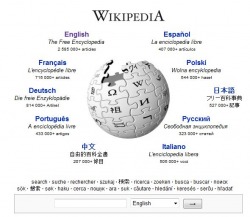
Or Why You Should Let Go of Your Fear and Learn to Embrace Wikipedia
I was at a conference last year, where a presenter explained to a roomful of teachers why we should all fear and distrust Wikipedia. It can, afterall, be edited and modified by anyone.
Anyone at all.
Even someone irresponsible and stupid. (It may have been my imagination, but I think she stared at me as she said that.)
As it turns out, she believes so strongly that Wikipedia is a force for evil that she actually encourages students to vandalize the site whenever possible. The assumption is, I guess, that once students see that even they can contribute to a research source, they will distrust it so utterly that they will stop using it.
To be fair, many teachers of good will earnestly disagree on how much students should be encouraged (or allowed) to use the online, collaborative encyclopedia for their research.
Wikipedia is certainly not mistake-free. There have been some dramatic, errors on Wikipedia that have made the news in the past few years, especially fake articles about nonexistant historical figures, but overall, Wikipedia is pretty accurate. I have not been able to find any news stories about fake articles that date from any more recently than 2005, and the British science journal Nature has done a survey of scientific articles on Wikipedia and determined that it is roughly as accurate in scientific matters as the Encyclopedia Britannica, with four errors to every three in Britannica.
False, damaging or misleading information can be inserted into any article, but these are usually caught within minutes and corrected.
My feeling - and this is based on nothing but my notoriously unreliable gut-check - is that if I use Wikipedia all the time (and I do), I'd be hypocritical to tell my students not to. They're going to have to navigate in a world of less-than-100%-trustworthy information and Wikipedia is a good tool to help them be critical consumers of information.
Anyway, enough ranting.
Here are three really cool tricks that you can do with Wikipedia:
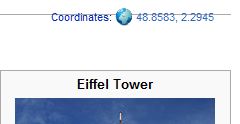
1. Mapping Stuff
When you look up something on Wikipedia that can be mapped - a landmark, a Civil War battle, etc... - in the top, right corner of the page, there will be a link labeled, "Coordinates". If you click on that link, it will take you to a page with the exact geographic coordinates for the place you are looking up, in several different formats.
You can copy any of these coordinates and paste them into the search box in GoogleMaps and map the exact location of whatever it is you are researching, or even ask Wikipedia to map it for you on any number of mapping sites. I have used this when I've been making up PowerPoints for geography lessons and I've had my students use it for a Civil War mapping project.
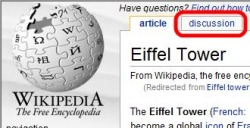
2. Finding Out How Accurate an Article Is
In the top, left corner of any Wikipedia article is a tab marked "discussion". Surprisingly, this is not a forum for everyday people to discuss the topic of the article - Cobalt 14 or Jessica Simpson's chihuahua's love life - but a history of the discussion that Wikipedia editors have had about the content of the article. They discuss in great, even obsessive depth, the spelling and grammar, the sources of information and the history of knuckleheads trying to mess with the accuracy of the article.
It's distressingly fascinating. ("Distressingly", because while I know that I am a really big nerd, this points out just how big.)
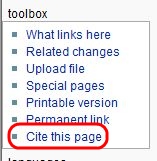
3. Citing Your Sources
In a sidebar on the left-hand side of every Wikipedia article is a box labeled "toolbox". At the bottom of that box is a link labeled, "Cite this page". If you click on it, it will take you to a page with a properly cited bibliography entry for the Wikipedia article you are reading in several different formats - Chicago, APA, etc... - and what is more, it will be for the exact version of the article you are reading! Because Wikipedia articles can change very quickly, this citation will refer specifically to the version that you or your student actually read. How cool is that?
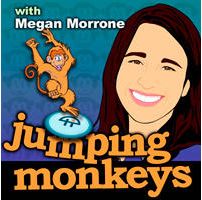
For More Information:
The really cool (okay - nerdy but interesting) podcast, Jumping Monkeys just did an interview with Pheobe Ayers, a librarian, Wikipedia Editor and one of the authors of the new book How Wikipedia Works.
Click here for a link to the show.
Click here to download just the interview with Pheobe Ayers.
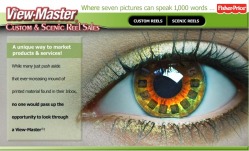





 RSS Feed
RSS Feed